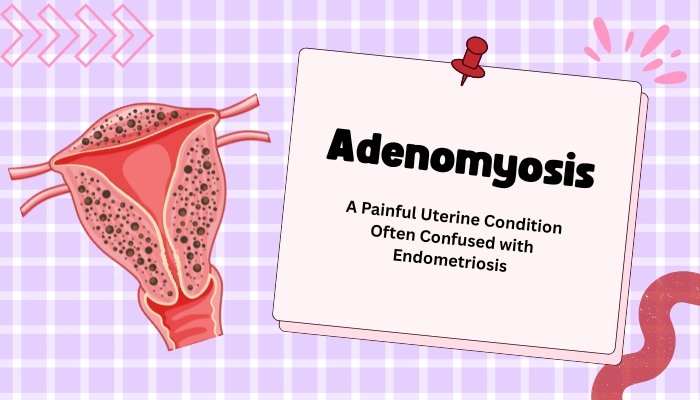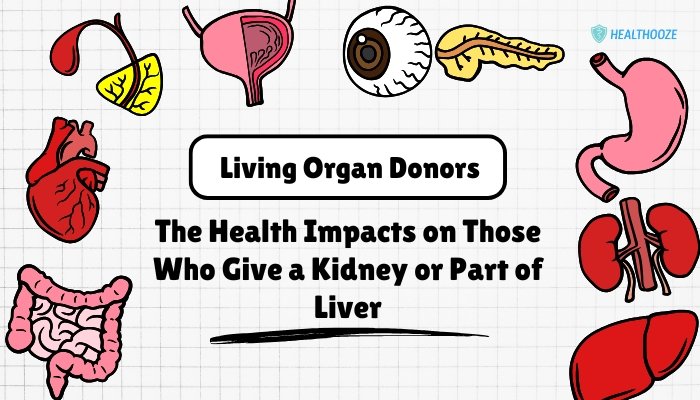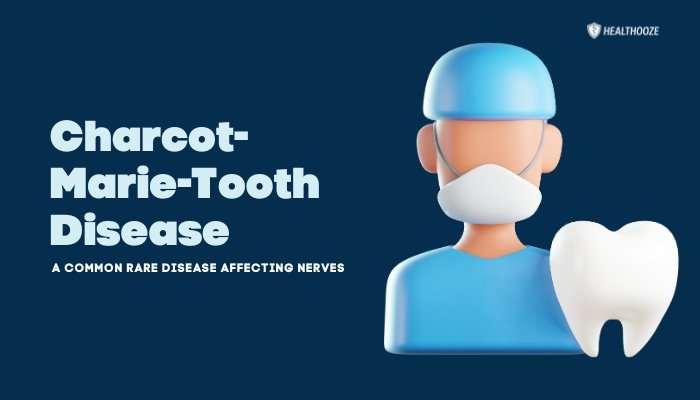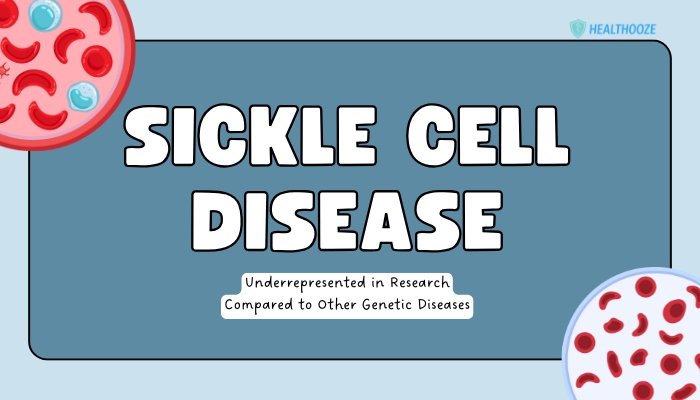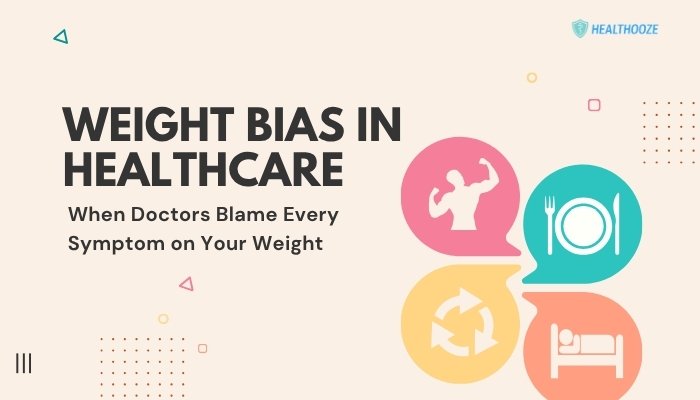Introduction
Adenomyosis is a uterine disorder in which tissue similar to the endometrium (the lining of the uterus) grows into the muscular wall of the uterus (the myometrium). This invasion can lead to an enlarged uterus, painful cramping, and significantly heavy or prolonged menstrual bleeding.
Because its symptoms often overlap with other gynecological conditions—particularly endometriosis—adenomyosis can be easily overlooked or misdiagnosed. The confusion is amplified by the fact that women with adenomyosis frequently experience intense pelvic pain, bleeding irregularities, and fertility challenges, paralleling signs attributed to more commonly discussed conditions.
This article clarifies what adenomyosis is, how it differs from endometriosis, possible risk factors, diagnostic challenges, and treatment options. By recognizing the unique features of adenomyosis and seeking accurate medical evaluation, individuals can pursue more targeted therapies, lessen chronic discomfort, and take proactive steps to improve their quality of life.
Understanding Adenomyosis
Defining Adenomyosis
In a typical uterus, the innermost layer (endometrium) and the middle muscular layer (myometrium) remain structurally distinct. Adenomyosis occurs when endometrial glands and stroma infiltrate deep into the myometrium, causing the uterine muscle fibers to become inflamed, thickened, and often painful during menstrual cycles. Although the growth does not necessarily form distinct lesions or cysts as endometriosis does, it still triggers many of the same symptoms—intense cramps, heavy bleeding, and pelvic pressure.
How Common Is It?
Estimates vary, but adenomyosis likely affects a significant percentage of individuals assigned female at birth, particularly those in their 30s or 40s who have had children. Due to underdiagnosis and confusion with fibroids or endometriosis, definitive statistics are elusive, yet it is recognized as a major contributor to abnormal uterine bleeding and chronic pelvic pain worldwide.
Key Differences from Endometriosis
- Location
- Adenomyosis: Tissue grows within the uterine wall (myometrium).
- Endometriosis: Tissue grows outside the uterus (e.g., on ovaries, ligaments, bowel, etc.).
- Presentation
- Adenomyosis: Often leads to a diffusely enlarged, tender uterus.
- Endometriosis: Lesions or cysts can appear on various pelvic and abdominal organs.
- Overlap
- It is possible to have both conditions simultaneously, and many with endometriosis also have adenomyosis, complicating diagnosis and treatment.
Causes and Risk Factors
Possible Mechanisms
While the exact cause of adenomyosis remains under study, several theories include:
- Invasive Tissue Growth: Microtrauma or uterine surgeries (e.g., cesarean section) may disrupt boundary layers, facilitating endometrial penetration into the myometrium.
- Developmental Origins: In some cases, embryonic tissue might incorrectly differentiate in the uterus, forming adenomyotic areas over time.
- Hormonal Influences: Excess estrogen or hormonal imbalances may promote excessive endometrial tissue proliferation, raising the risk of invasion.
Known Risk Factors
- Age and Parity: Women in their late 30s or 40s who have had multiple pregnancies face higher adenomyosis incidence. Hormonal changes and uterine remodeling after childbirth may encourage infiltration.
- Uterine Procedures: Prior surgeries (C-sections, myomectomies, dilation & curettage) might create microdefects in uterine walls, offering a pathway for endometrial cells to enter the muscle layer.
- Genetic Predisposition: Family history of adenomyosis or endometriosis may reflect shared genetic susceptibilities.
- High Estrogen Exposure: Conditions or treatments causing elevated estrogen levels can accelerate abnormal tissue growth.
Coexisting Conditions
Adenomyosis often co-occurs with fibroids (benign uterine tumors) or endometriosis, amplifying pain and bleeding. This overlap makes thorough diagnostic measures crucial, as multiple pathologies may influence treatment decisions.
Signs and Symptoms
Heavy, Painful Periods
- Menorrhagia (Heavy Bleeding): Periods can last longer than usual, saturating pads or tampons faster than normal, and potentially leading to anemia if severe.
- Dysmenorrhea (Cramping): Pain arises from uterine contractions pushing blood through thickened, inflamed tissues. Some individuals describe searing pain that intensifies over time.
Chronic Pelvic Pressure
Adenomyosis may enlarge the uterus uniformly or create localized thickening. Patients often notice pelvic fullness, as though carrying a small mass, accompanied by consistent dull aches.
Pain During Intercourse
While not universal, an engorged, tender uterus can cause discomfort or pain (dyspareunia) during deep penetration. Accompanying pelvic floor tension and inflammation might contribute.
Clotting and Prolonged Menstrual Flow
Dark, thick clots can appear due to inefficient shedding and prolonged bleeding intervals. Some patients shift to double-protection strategies for fear of accidental leaks or unexpected flooding.
Non-Specific Discomfort
- Lower Back Aches: Referred pain may radiate to the sacrum or lumbar region.
- Bladder or Bowel Pressure: In advanced adenomyosis, the enlarged uterus can press on adjacent structures, possibly leading to urinary frequency or constipation.
Diagnosis: Why It Can Be Tricky
Overlapping Symptoms with Other Conditions
- Fibroids: Noncancerous uterine growths share many signs (heavy bleeding, enlarged uterus, pelvic pain).
- Endometriosis: Chronic pelvic pain, painful periods, and potential fertility issues can all be mirrored.
- Pelvic Inflammatory Disease or IBS: Chronic lower abdominal pain might be incorrectly attributed to infections or intestinal problems.
Diagnostic Tools
- Clinical Evaluation
- Bimanual exam: The uterus may feel bulky or tender, but this can be nonspecific.
- Patient history: Detailed accounts of pain severity, cyclical patterns, and changes over time.
- Imaging
- Transvaginal Ultrasound: Can reveal a “venetian blind” appearance or heterogeneous myometrium suggesting adenomyosis. However, detection depends on operator skill and machine quality.
- MRI: More sensitive for identifying thickening of the junctional zone, cystic changes, or distinct infiltration patterns in the uterus. Often considered the gold standard for imaging-based suspicion.
- Ruling Out Other Disorders
- Hysteroscopy or Sonohysterogram: Helps visualize the uterine cavity for polyps or submucosal fibroids.
- Biopsy: Histopathological confirmation typically occurs post-hysterectomy. Minimally invasive sampling from the uterine wall remains experimental or less common.
Delayed Diagnosis
Physicians sometimes first suspect fibroids or downplay “painful heavy periods” as routine. Without advanced imaging or specialized OB-GYN input, adenomyosis can remain undetected for years. Women themselves may not raise concerns if family or cultural norms normalize severe cramps.
Treatment Options and Management
Medical Treatments
- Hormonal Therapies
- Combined Oral Contraceptives or Progestin-Only Options: Suppress cyclical thickening, ease bleeding, and reduce pain.
- Levonorgestrel Intrauterine Device (IUD): Locally releases progestin, thinning the endometrium and often lightening periods.
- Gonadotropin-Releasing Hormone (GnRH) Agonists or Antagonists: Temporarily create a low-estrogen state, shrinking adenomyotic tissue. Not always a long-term solution due to side effects.
- NSAIDs and Pain Medications
- Nonsteroidal anti-inflammatory drugs help alleviate cramping, though often best paired with hormonal measures for robust results.
Interventional Approaches
- Conservative Surgery
- Adenomyoma Resection: Targeted removal of focal adenomyotic lesions while preserving the uterus. Typically indicated if the disease is localized and the patient desires future fertility.
- Uterine Artery Embolization (UAE): Used for fibroids, but can offer some relief in adenomyosis by blocking blood flow to abnormal tissue, though data on effectiveness varies.
- Definitive Surgical Option
- Hysterectomy: Removing the uterus is a definitive cure if no future pregnancies are desired. This approach must be weighed carefully, especially for younger patients hoping to conceive.
Complementary and Lifestyle Measures
- Diet and Exercise: Balanced nutrition, moderate exercise, and weight management can support better hormonal balance and reduce inflammation.
- Stress Reduction: Chronic stress may intensify pelvic pain. Mind-body practices (yoga, meditation) help coping.
- Heat Therapy: Warm compresses or baths can soothe cramping temporarily.
- Physical Therapy: Pelvic floor therapy improves muscle function, beneficial if secondary muscle tension contributes to pain.
Fertility Considerations
Impact on Conception
Adenomyosis can distort the uterine cavity or hamper implantation, raising miscarriage risks and complicating natural fertilization. Women may experience difficulty conceiving or maintaining pregnancy.
Treatment Pathways for Fertility Goals
- Hormonal Modulation: Achieving controlled growth of the uterine lining to improve uterine conditions before attempting natural or assisted conception.
- Surgery: Conservative resection might enhance fertility outcomes if the bulk of diseased tissue is removed, though results vary.
- ART (Assisted Reproductive Techniques): IVF or ICSI can circumvent certain challenges, but success rates differ based on severity.
Counseling and Emotional Support
- Realistic Expectations: Thorough discussions of success rates and potential pitfalls help couples manage emotional strain.
- Mental Health Resources: Fertility struggles can intensify stress and despair; therapy or support groups provide coping strategies and connection.
Emotional and Social Implications
Chronic Pain and Emotional Well-Being
Persistent pelvic pain and heavy bleeding erode daily quality of life, fueling anxiety, depression, or social withdrawal. Some individuals battle feelings of shame regarding their body’s unpredictability.
Career and Relationship Strain
- Workplace Impact: Frequent sick days or difficulty focusing during flares hamper professional growth and lead to stigma if misunderstood by employers.
- Partner Intimacy: Dyspareunia or worry about post-coital spotting can deter sexual closeness, affecting both partners’ emotional satisfaction.
Encouraging Dialogue and Advocacy
- Speaking Up: Openness regarding debilitating periods can prompt earlier medical consultations or push for more accurate differential diagnoses.
- Patient Advocacy Groups: Collective activism pushes for better research funding, fosters community support, and shares practical tips for daily management.
- Social Media: Online forums or hashtags mobilize those with adenomyosis, providing a platform to exchange experiences and highlight solutions.
Breaking the Cycle of Misdiagnosis: Strategies for Improvement
Education for Healthcare Professionals
- Updated Curriculum: Medical institutions can emphasize adenomyosis recognition, teaching how to differentiate it from fibroids and endometriosis.
- Better Use of Imaging: Encouraging radiologists and OB-GYNs to refine their ultrasound and MRI interpretation skills specific to myometrial changes.
- Interdisciplinary Collaboration: Engaging pain specialists, pelvic physiotherapists, and psychologists in a cohesive care model.
Patient Empowerment
- Symptom Documentation: Tracking pain severity, cycle irregularities, or unusual flow patterns helps convey concerns convincingly to doctors.
- Advocating for Second Opinions: Seeking specialized OB-GYNs or reproductive endocrinologists if first-line evaluations yield inconclusive or dismissive responses.
- Knowledge-Sharing: Accessing reputable resources from health agencies or dedicated adenomyosis nonprofits fosters autonomy in medical decisions.
Public Health and Policy
- Awareness Campaigns: Government or NGO-led initiatives focusing on heavy menstrual bleeding and pelvic pain as signals for thorough investigation.
- Insurance Coverage: Ensuring advanced imaging (MRI) and novel therapies are affordable, bridging inequities in prompt, accurate diagnosis.
- Global Partnerships: International research collaborations expand epidemiological understanding, bridging data gaps and accelerating therapy innovations.
Conclusion
Adenomyosis, though pervasive, remains overshadowed by more commonly discussed uterine conditions such as fibroids and endometriosis. Yet its hallmark symptoms—intense menstrual pain, heavy bleeding, and potential fertility hurdles—can seriously erode physical health, career prospects, and emotional well-being. By distinguishing adenomyosis from overlapping conditions, healthcare providers can target more effective treatments, sparing patients from years of trial-and-error or undue suffering.
Wider education campaigns, medical training, and integrated care models hold promise for earlier detection and better management. For those grappling with unexplained pelvic pain or abnormal bleeding, staying proactive—collecting symptom details, seeking second opinions, and exploring multiple therapeutic avenues—can yield renewed quality of life. As society gradually demystifies female reproductive disorders, acknowledging adenomyosis is a crucial stride forward, ensuring that no woman’s pain is dismissed or overlooked.
References
-
- World Health Organization. Reproductive health: endometriosis and adenomyosis. 2021.
-
- Bird CC, McElin TW, Manalo-Estrella P. The elusive adenomyosis of the uterus—revisited. Am J Obstet Gynecol. 1972;112(5):583–593.
-
- Vercellini P, Consonni D, Dridi D, et al. Uterine adenomyosis and in vitro fertilization outcome. Fertil Steril. 2014;102(6):160–167.
-
- Bergeron C, Amant F, Ferenczy A. Pathology and physiopathology of adenomyosis. Best Pract Res Clin Obstet Gynaecol. 2006;20(4):511–521.
-
- Benagiano G, Brosens I. History of adenomyosis. Reprod Biomed Online. 2012;24(1):12–16.
-
- Horobin J, Bandara M, Freedman S, et al. The effect of high-intensity focused ultrasound in the treatment of adenomyosis. Ultrasound Obstet Gynecol. 2018;52(1):99–107.
-
- Kishi Y, Yabuta M, Taniguchi F. Who will benefit from uterine-sparing surgery in adenomyosis-associated subfertility? Fertil Steril. 2014;102(3):802–807.
-
- Abbott JA. Adenomyosis and abnormal uterine bleeding (AUB-A)—pathophysiology to treatment. Best Pract Res Clin Obstet Gynaecol. 2017;40:68–81.
-
- García-Solares J, Donnez J, Donnez O, et al. The pathophysiology of uterine adenomyosis: an update. Reprod Sci. 2018;25(6):803–809.
-
- Bergeron C, Amant F. Adenomyosis: an update. Diagn Histopathol. 2018;24(3):96–103.
-
- Horton J, Sterrenburg M, Lane S, et al. Reproductive surgery for adenomyosis in women of reproductive age. Cochrane Database Syst Rev. 2019;(1):CD011110.
-
- Vannuccini S, Petraglia F. Recent advances in understanding and managing adenomyosis. F1000Res. 2019;8:F1000 Faculty Rev-283

